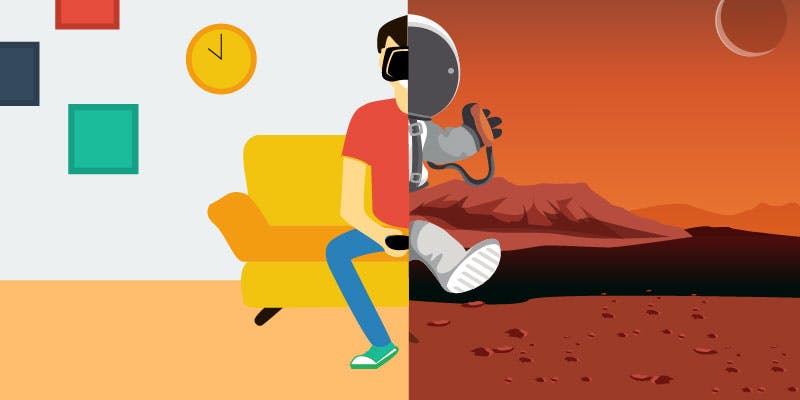Introduction to Virtual Reality
Take a moment and visualize yourself somewhere else. Were you thinking of a memory, a place, an event in history?
Imagine running with the bulls in Spain, scaling the rock walls of Mount Everest, or sitting atop the Great Sphinx of Giza in ancient Egypt.
What would it be like to travel the galaxy or even create worlds of your own? With virtual reality (VR) technology all of this could be possible.
Different from the reality we find ourselves in daily, VR is a simulation or recreation of our perceived reality.
Our imagination is riveted when introduced to the combined experience of seeing, hearing, and feeling like we are in a virtual world.
Using specialized equipment and platforms such as the Oculus Rift and HTC VIVE, individuals can experience VR technology through an expansive
variety of games and virtually constructed realities.
Entertainment aside, the applications of VR extend beyond recreational use and are valuable in areas such as medical and dental training,
architectural design, and scientific research. VR can aid anxiety by providing rehabilitation in some forms of therapy and is even being used in
educational and psychological research (Rosa and Breidt, 2018, p. 427-430). New advancements in VR are proving to be a significant development in
redefining how mankind uses technology. This essay will examine VR in further detail, including the background of what constitutes VR technology
and the necessary equipment involved. Furthermore, this paper will examine VR applications in medicine, science, and education in addition to design
and architecture, as well as the positives and negatives regarding the legal, social, ethical, and security standpoints associated with its use.

Will Lawson - IT104-006 - George Mason University

